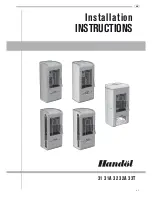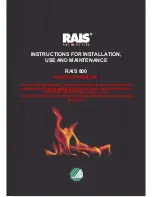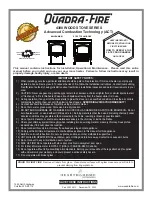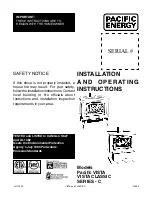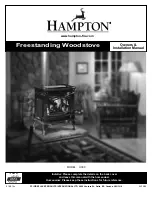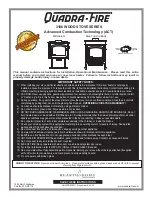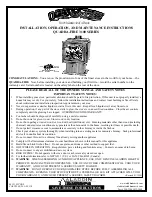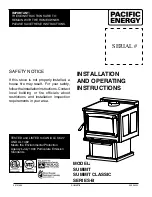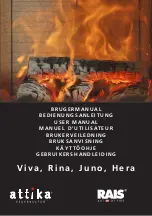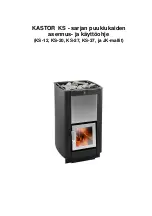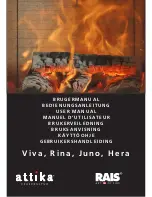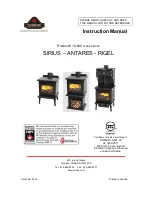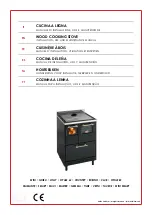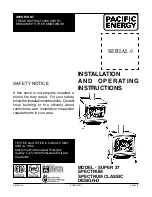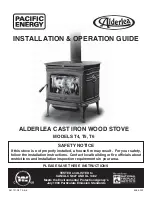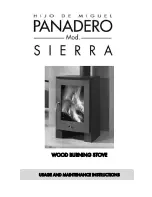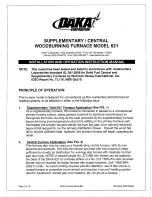
Fuel Quality
1.
Use wood with a moisture content of less than 20%.
Logs should not feel moist or damp, or have moss and
fungal growths.
2.
Symptoms related to wet wood:
Difficulty starting and keeping a fire burning well
Smoke and only small flames
Dirty glass and/or fire bricks
Rapid creosote build-up in the flue/chimney
Low heat output
Short burn times, and blue/grey smoke from the
flue/chimney outlet
3.
Run the appliance at high heat output for a short period
each day to avoid large build-up of tars and creosote
within the appliance and flue.
Flue Draught
The flue has two main functions:-
1.
To remove smoke, gases and fumes from the appliance.
2.
To provide a sufficient amount of draught (suction) in
the appliance to ensure the fire keeps burning.
Draught is caused by the rising hot air in the flue when the
fire has been lit.
The position, height and size of the flue can affect the
performance of the flue draught. Refer to installation guide
for details on flue installation.
Factors affecting the flue draught include:
Insufficient flue height
Trees or other buildings nearby causing turbulence
High and gusty winds
Outside temperature and weather conditions
Blocked flue
For advice on the correction of persistent flue problems
consult your supplier/installer for more detail.
Depending on the type of wood burnt and frequency, the
ashes will need removing every 2 to 6 weeks.
Excess ashes should be removed when necessary, placed in
a non-combustible container such as the ash pan beneath
and moved outdoors immediately to a location clear of
combustible materials.
Leave a small amount of ash, approximately 10mm thick, in
the bottom of the firebox. This helps to insulate the base of
the firebox.
If a flue/chimney fire occurs:
Shut air slide control fully to smother the fire
Do not use the appliance after a flue fire until an
accredited installer has assessed the cause and any
resultant damage.
The appliance, when cool, can be cleaned with a damp
cloth.
Over the years, the black paint will fade and can be
touched up with Stove Bright metallic black paint.
To clean the glass, we recommend using a household
window cleaner or general purpose cleaner with a soft
cloth.
Do not use abrasive cleaner or scourer pads.
Check inside of flue prior to each season for any build-up of
creosote (wood tar). To do this:-
1.
First remove the two baffle plates (refer to “3.
Replacement of Baffle Plates” under Maintenance &
Servicing section).
2.
Using a small mirror and torch hold the mirror on an
angle below the flue with the torch shining at it and
6. BURNING TIPS
7. ASH REMOVAL
8. FLUE/CHIMNEY FIRE
9. CLEANING PAINT WORK & GLASS
10. CLEANING THE FLUE









